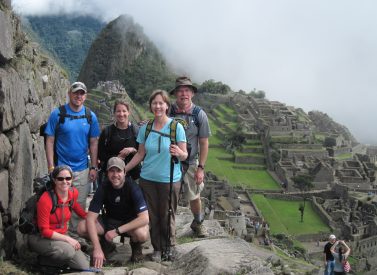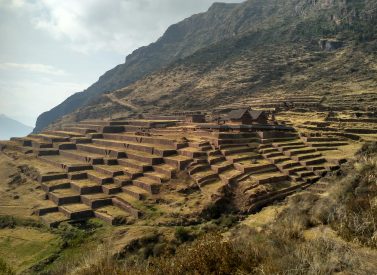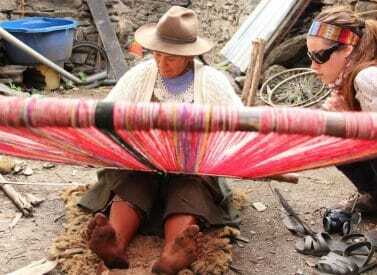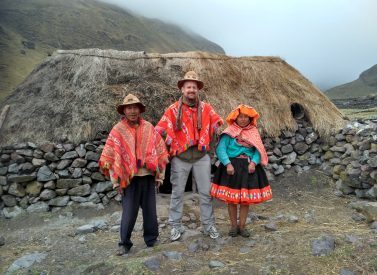
Lares & Inca Trail Treks To Machu Picchu
Combine the beautiful Lares trek with the two-day Inca Trail hike to Machu Picchu.
Our unique combination of two hikes gives you an authentic view of highland life in Peru.
This is followed by arrival at the famous Sun Gate that overlooks Machu Picchu.
First is Lares, a trek that brings you close to traditional weaving and farming cultures, enormous Andean mountains and lovely hot springs in which to rest those aching legs.
More on Lares trek
Passing through the rich farming land of the Sacred Valley we start walking deep into the Cordillera Urubamba.
We traverse high mountain peaks and fertile valleys, stopping along the way to enjoy panoramic views, lakes and natural hot springs.
The remoteness of the area has allowed its people to preserve traditions of llama and alpaca herding and potato cultivation.
This area is most famous for its traditional colourful weaving, much of which dates back to pre-Inca times.
You spend a night in historic Ollantaytambo before waking early and travelling to the start of the two-day Inca Trail.
More on Inca Trail trek
This short, 2-day version of the classic 4-day Inca Trail is perfect for those looking to get to Machu Picchu on the path less known.
Hiking up out the valley you visit the impressive Winay Wayna Inca site en route to the Sun Gate for that first and famous look at Machu Picchu, the magic Lost City of the Incas.
There is a day dedicated to exploring the complex before the return to Cusco.
Inca Trail trek permits are sold on a first come, first served basis and sell out months in advance, especially in the peak period of May-Sept.
Trip Highlights
Print Share Download as PDF-
Combine two of Peru’s iconic treks: the Lares and the Inca Trail trek to Machu Picchu.
-
See authentic Peruvian highland weaving and farming cultures in Lares.
-
Mix culture with high mountains and glaciers.
-
First view of Machu Picchu from the Sun Gate in the afternoon, away from the crowds.
-
Community-based treks means you leave only a positive footprint.
We LOVED the trek. It was hard, beautiful, cultural and well organized. Our whole family enjoyed the 3 other trekkers in our group and the staff was great including cook, guide, horsemen and other help. Yamil, our English-speaking Peruvian guide did a very good job and our cook made a birthday cake for a Scottish woman in our party!
Our guide showed us the school that is supported by the income from the treks. They apparently provide a yearly salary for one of the two teachers at the school. This seems fantastic. We camped in two villages and it didn't feel too intrusive since our group was small and no other groups were seen trekking.
K. Lindsay, Lares trek
Full Itinerary
Day 1: Cusco – Pisac – Calca Market – Huacawasi Hike (L,D)
Cusco – Pisac – Calca Market – Huacawasi Hike
We’ll collect you at 7:00 am from your hotel and set off for the Sacred Valley. Our first stop is at Pisac ruins.
Pisac Ruins
Pisac has impressive terraced Inca ruins, where you’ll be able to climb to the top for amazing views of the Sacred Valley. Your guide will explain the religious, astronomical, and military significance of the site.
Pisac is also home to one of the largest Inca cemeteries, which we’ll explore before continuing to Calca.
In Calca, we visit the authentic market, where locals from across the Sacred Valley come to trade. The market offers an array of fascinating goods. Feel free to ask your guide about anything that catches your eye. Stalls fill the market hall and its surroundings, creating a lively atmosphere.
We then drive to the trailhead in the community of Lares. The little town is famous for its natural hot springs, a popular spot among locals. While our chef get lunch ready, you’ll have the chance to relax in these soothing waters.
Lares Hot Springs
The Lares hot springs are simple but the waters are rich in minerals and renowned for their healing properties. There are four hot pools surrounded by lush mountain scenery and two cold pools for a refreshing dip.
What to Bring: A bathrobe, towel, swimsuit, sandals, biodegradable soap, toilet paper, and a lock for the lockers.
Refreshed, we begin our trek towards Machu Picchu. The first leg is a three-hour climb to Huacawasi, where we’ll spend the night. As you settle in, our chef will prepare dinner.
Cultural Activities in Huacawasi
Depending on the season, we will have the change to take part in traditional activities with local families, such as:
- Planting, harvesting, or selecting potatoes.
- Weaving Workshops: Learn various techniques, create patterns, and use traditional looms in a hands-on session.
- Wallata Dance: A traditional dance inspired by the Wallata bird, performed during local festivals.
Altitude: 2,850-4,400m (9,350ft-14,436ft)
Hiking Time: 3 hours
Driving Time: 3 hours
Overnight: Guesthouse
Day 2: Huacawasi – Weaver Family Visit – Condor Pass – Mantanay(B,L,D)
The day begins early with a 6:00 am breakfast, followed by a visit to a local family. These communities seem untouched by time, preserving their traditional way of life.
Their exceptional weaving skills showcase intricate designs influenced by Inca astronomy, medicine, and culture. After a weaving demonstration, we begin our trek.
The highlight of today’s hike is reaching the highest point of the Lares Valley trek—Condor Pass (4,600m/15,091ft)—after a three-hour ascent. Here, we are rewarded with spectacular views of snow-covered Andean peaks and Aurora Lake. Keep an eye out for grazing llamas and alpacas.
We head downhill for an hour to a scenic lakeside spot for lunch before continuing for two more hours to our next campsite at Mantanay. After dinner, we’ll gather around a bonfire for marshmallows and stories.
Hiking Time: 7 hours
Difficulty: Moderate
Overnight: Campsite at Mantanay
Day 3: Mantanay – Farm Visit at Yanahuara, overnight Ollantaytambo (B,L,D)
With most of the ascent behind us, we break camp and descend for three hours through high Andean jungle. Along the way, we see native trees once used by the Incas for tools, houses, and bridges.
At Yanahuara, a Sacred Valley farming community, we meet the Baca family, who have been cultivating crops for four generations. Señor Baca will show us around the farm, where we can help gather produce for lunch and cut alfalfa to feed guinea pigs—an Andean staple prepared for special occasions.
While our chef prepares a fresh meal, Señora Baca will share the secrets of chicha, the traditional Inca corn beer, and talk about its historical significance and brewing process.
What is Chicha?
Chicha is a fermented alcoholic drink made from maize, though variants use quinoa, yucca, or potato. Central to Inca rituals and ceremonies, chicha remains popular during special occasions. It’s often brewed at home and sold in chicherías, small taverns identifiable by a red flag outside.
After our farm-to-table lunch, we drive to Ollantaytambo, where we check into our hotel before dinner at a local restaurant.
Overnight: Pakaritampu Hotel, Ollantaytambo or similar
Day 4: Ollantaytambo – KM104 – Aguas Calientes (B,L ,D)
Note: You’ll be picked up at 5:20 am to catch the 6:00 am train.
Our team will collect you from your hotel and take you to the station. The train journey from Ollantaytambo to KM104 offers wonderful views of snow-dusted peaks and the winding Urubamba River. As we travel through the Sacred Valley, we pass fields worked by local farmers and small villages, and see the landscape transform from lush pastures to jungle full of orchids and ferns.
After a scenic two-hour ride, we disembark and notice the warmer, humid air—a hint of Peru’s Amazon rainforest. This fertile region is home to a variety of crops, including yucca and sweet potatoes. Our team greet you here for a delicious breakfast before beginning your hike. At the Inca Trail checkpoint, we have passports and permits checked—something we’ve arranged in advance—before starting the trek.
Chachabamba Ruins
Shortly after crossing the Urubamba River, we arrive at the interesting Chachabamba ruins. Discovered in 1940, this archaeological site served both religious purposes and as a gateway protecting Machu Picchu.
Situated at 2,150m (7,054ft), the site features ceremonial baths, a natural rock altar, and a small plaza that offer glimpses into the spiritual and cultural practices of the Inca civilisation.
Hiking to Wiñay Wayna
From Chachabamba, we set off on our trek to Wiñay Wayna, which means “Forever Young” in Quechua. Located at 2,650m (8,695ft), the hike to this site takes approximately 3-4 hours, with a combination of uphill sections and flatter stretches.
Along the way, we’re treated to lovely scenery—waterfalls, orchids, and sweeping views of the Sacred Valley. We’ll also catch a glimpse of Machu Picchu mountain, though the main ruins remain hidden for now.
Wiñay Wayna
Wiñay Wayna is one of Peru’s most visually striking Inca sites, perched on a steep mountainside overlooking the Urubamba River. The site is renowned for its agricultural terraces, the Temple of the Rainbow, intricate fountains, and stone architecture.
Often shrouded in mist from the cloud forest, these ruins exude a mystical charm. After exploring the site, we take a break for lunch in this serene spot.
Hiking to the Sun Gate (Inti Punku)
We continue along a relatively gentle 3-mile (4.7km) trail towards Machu Picchu. Our destination is the iconic Sun Gate, or Inti Punku, situated at 2,745m (9,005ft). As we approach the gate, the view remains hidden until the last moment.
Passing through Inti Punku, the awe-inspiring sight of Machu Picchu reveals itself. Once a strategic fortress controlling access to the ancient citadel, the Sun Gate now offers visitors an unforgettable first glimpse of Machu Picchu, 300m (985ft) below.
In addition to its role as a look out point, the Sun Gate holds astronomical significance: during the summer solstice, sunlight aligns perfectly as it passes through the gate.
By arriving in the afternoon, we avoid the early morning crowds, allowing you to take in the views and capture that perfect photo. From here, we descend towards the ruins but take a detour to the right, leading us to the entrance where we catch a bus to Aguas Calientes.
Evening in Aguas Calientes
After checking in at our hotel, we have dinner at a delightful local organic restaurant. The day concludes with a good night’s sleep in preparation for tomorrow’s in-depth exploration of Machu Picchu.
Distance: 10km / 6.3 miles
Elevation: 2,150m-2,750m-2,040m
Hiking Time: 4-5 hours
Difficulty: Easy to Moderate
Day 5: Machu Picchu tour, train and bus back to Cusco (B)
Rising early, we aim to be at the site in time to see the sun rise over Machu Picchu. A 25-minute bus ride takes us to the entrance, where your guide leads a two-and-a-half-hour tour of the site’s highlights, including:
- Intihuatana (Sun Clock): A finely carved sundial.
- Temple of the Sun: Machu Picchu’s most sacred site.
- Temple of the Condor: A natural rock formation resembling a condor.
For the adventurous, additional hikes to Huayna Picchu or Machu Picchu Mountain offer fabulous views (permits required)
After exploring, we head back down to Aguas Calientes for lunch and return to Cusco via train and bus, bringing our journey to a close.
IMPORTANT – Machu Picchu and Huayna Picchu entrance permits.
If you wish to climb Huayna Picchu or Machu Picchu mountain, places now also have to be pre-booked and come at an additional cost.
Huayna Picchu mountain
A steep one-hour climb (360m above the main Machu Picchu ruins), much of which is up Inca stairs. The climb involves scrambling and requires a good head for heights as there are some drops and a set of steep stairs – with no railing.
The views from above are wonderful and certainly reward those who tackle it. It’s worth visiting the Temple of the Moon on the west side of Huayna Picchu mountain, 400m below the summit. There is some high quality Inca stone work inside a cave, once a sacred place. Climbing Huayna Picchu is popular and permits usually sell out, which means there will be 200 climbers for each time slot given.
Do not attempt this climb if you are concerned about suffering from vertigo.
Machu Picchu mountain
Just south of the site, and overlooking it, is a 650m climb up a well made Inca pathway (approx 1.5 hrs to top, 1 hr down) to the top of Machu Picchu Mountain.
There are some Inca constructions on the top that were probably for religious ceremonies, given the prominent position of the mountain. The hike takes you through lush forest, keeping a look out for birds, flowers and snakes sunbathing on the path.
The views over the site a great and you can view the iconic Huayna Picchu as the backdrop to Machu Picchu, as well as the mountains beyond. It is attracting more and more people as an alternative to Huayna Picchu but is still a lot quieter.
Prices From $1,788 / £1,454 per person
What's Included?
Large dome tents , camping mat, dining and kitchen tent tent, basic toilet facilities, English speaking guide, cook, pack horses (to carry 10kg of luggage per person), meals as listed, first-aid kit, entrance to Inca trail and Machu Picchu, bus tickets Machu Picchu to Aguas Calientes, train tickets Aguas Calientes to Ollantaytambo (Expedition or Vistadome available for extra $55pp one way, $110pp return), private transfer to and from hotel (door to door service), & hotel in Aguas Calientes (3-star hotel such as Casa Andina, Tierra Viva or equivalent)
What's Not Included?
International flights (we can look into these for you), meals not listed: breakfast day 1 and 5 , lunch day 5, alcohol, gratuities, Huayna Picchu permit ($75 per person), Machu Picchu Mountain permit, upgrade to Vistadome for $55pp one way, $110pp return, sleeping bag, trekking poles, air mattress (each available for $20 per person), Boleto touristico needed to visit Pisac, also covers visits to most other archaeological sites in & around Cusco 130 soles or $40.
Accommodation
One night camping with dining tent and toilet tent, simple guest house in Huacawasi and hotels in Ollantaytambo and Aguas Calientes.
Tour Staff
All guides are certified, bilingual, English-speaking guides who have worked with us for many years.
Cooks, mule drivers and additional staff are all from the local, Lares communities and we have worked with them for a long time.
Meals
Vegetarians and many other dietary requirements are catered for without problems. Please let us know in advance of any requirements you have.
On Lares, you generally wake early, usually around 07.00. Breakfast is served in a dining tent, and consists of hot drinks, porridge, toast, jams and bread, and your guide will explain the day’s trekking plans.
Lunch is usually around 13.00 and can feature soups, meats, salads and fish, with vegetarian options and hot drinks too.
The campsites are comfortable and around 17.00 hot drinks, popcorn and other snacks are served to help you recover energy.
Dinner is served around 19.30, and will feature pasta, mashed potatoes, meat, fish or vegetarian options, followed by hot drinks and a pudding.
On the Inca Trail, you have breakfast at your hotel on the day we start, followed by a packed lunch of sandwiches, snacks and fruit etc. Dinner is your own choice from the restaurants in Aguas Calientes.
Activity Level
We have classified this as a moderate trek, and you need to be in good physical shape for it.
You hike 3-5 hours a day, on four consecutive days, over rugged mountain trails at elevation.
There is a high altitude pass to cross at 4,700m/15,420ft before dropping into lower elevations en route to Machu Picchu.
Pre-trip preparation should include challenging cardiovascular exercise (including regular hikes on varied terrain) and a healthy, balanced diet.
Well-worn hiking boots and additional acclimatisation nights in Cusco (3-4) before the trek are both highly recommended.
All guests are encouraged to hike at their own pace, taking breaks whenever needed, to ensure a successful and enjoyable trek for all.
Most people go to bed fairly early after a long day trekking, to recover energy for the morning.
Practical Information
Introduction to Peru
Peru is the perfect holiday destination for adventure travellers that want an amazing variety of activity, geography and cultural travel experiences.
The breadth of travel experiences in Peru is breathtaking – from trekking in the Andes to Machu Picchu to the tropical jungle of the Amazon, and plenty in between.
The people of Peru make it a special destination too, with its colourful and traditional street life and friendly locals.
Geography of Peru
Peru is made up of 3 distinct geographical areas: the coast, the mountains and the jungle.
The costa or coastal region is a narrow ribbon of desert 2,250 km long, crossed by fertile river valleys flowing from the Andes. It takes up 11% of the country and holds more than 40% of the population.
The cold Humboldt current gives rise to a blanket of mist – the garua – which hangs above coastal cities like the capital Lima from May to November.
Heading east, you’re soon climbing above the garua and into the Andes. The sierra, or mountainous region, covers some 25% of Peru’s territory and contains 50% of the population. The sierra inhabitants are mainly Indigenous or Mestizo, and many still speak Quechua or Aymara.
The sierra contains dozens of 6,000-metre snow peaks and volcanoes, including Huascaran (6,768m) the highest mountain in the tropics. The deep valley basins contain most of the towns and arable land; the terracing and canal systems of the Incas and pre-Incas are often still used today.
The eastern Andes are heavily forested up to 3,350m and sweep down into the Amazon Basin.
Peru’s selva or jungle makes up almost two thirds of the country’s area, but holds only about 6% of the population: the only towns with significant populations are Iquitos and Pucallpa.
Weather in Peru
You can also read about the weather of Peru in our blog.
Peru is located in the southern tropics (latitudes 0º to 18º), but climate varies significantly according to season, altitude and region.
Lima & the coast
From May to October, Lima is often overcast, but with minimal precipitation. There are sunny spells, and it’s a fresh to pleasant 13-20ºC.
At the same time, inland areas and the north coast mid to high 20’s ºC.
November to April is generally warm and sunny and Lima enjoys warm temperature of 19-25ºC, with the coast averaging 22-30ºC.
The Andes
Climate depends largely on altitude. As a rule of thumb, below 2,000m climate is mild and above 2,000m warm clothing is required for evenings, nights and early mornings.
The Andean sun is very strong.
May to Oct (dry season in The Andes)
Cusco (3,300m): Average max/min temps: 22ºC /2ºC. Average 3 or 4 wet days per month.
Arequipa (2,380m): Average max/min temps: 26ºC /9ºC. Sunny more than 340 days/year with minimal precipitation.
On highland treks: Conditions are generally dry. However, at this time of year, expect a range of conditions within a single day: cold/freezing nights at camps above 4,000m, where pre-dawn temperatures can be -5ºC; warm, spring-like mornings and afternoons; and cold evenings.
Note that mountain weather can be fickle and localised, and that precipitation is not unknown in the dry season. Expect temperatures to swing between sun and shade, sheltered and exposed ground and with altitude gain and loss. A quick-setting sun means temperatures drop fast.
In the cloud forest, e.g. around Machu Picchu, daytime conditions are generally warm or hot, and evenings cool.
Nov to March/April (wet season in The Andes)
Cusco: Average max/min temps: 23ºC /6ºC. Average 13 wet days per month.
Arequipa: Average max/min temps: 25ºC /14ºC.
On highland treks: Wetter conditions, with cooler days and milder nights than dry season. Jan-Mar usually the wettest months.
The Amazon rainforest
Year-round, weather conditions are hot and humid and there is always the risk of rain
There is a ‘dry season’ in Tambopata and Manu between May and October. The average daytime high temperature is between 25°C and 34°C and the average nighttime low is between 16°C and 22°C. Heavy downpours typically occur every few days.
Around 80% of annual average rainfall – approx 2,000 mm in Manu and Tambopata and 1,400 mm in Iquitos – occurs in the wet season Nov-April.
On rare occasions, between May and September, cold fronts from Argentina – ‘friajes’ – can sweep into southwest Amazonia and push temperatures down to 9° C. (Friajes usually last between 1 and 3 days).
Kit list
Good kit is vital for every trip.
Book with Andean Trails and get 15% off Páramo’s fantastic ethical and high performance outdoor gear.
Overview
When planning for the varied climatic conditions encountered, layering is the most practical and versatile clothing system. It’s worth remembering that our clothing keeps us warm by retaining and isolating the heat we ourselves create.
To best maintain body heat, several layers of lightweight, warm and quick-drying clothing are far more efficient than one or two thick layers. Layers should have the following qualities:
- Breathability (able to wick away the humidity produced by sweat):
- Isolation (able to keep in the warm air our body produces); and
- Impermeability (able to impede the passing of wind and water).
First (base) layer: This layer wicks the sweat away from our skin, thus helping keep the body dry and warm. To this end, synthetic fabrics such as polypropylene should be used.
Mid layers: These isolating layers should also be synthetic (e.g. the known polar linings such as polartec or windblock, which are light and insulate twice as well as wool). Very important layers for retaining body heat.
Outer layer / shell: Finally, the vital layer which protects us from climatic adversities. A breathable, wind-proof and waterproof anorak, such as Goretex.
Give plenty of thought to kit selection, and try to keep weight down.
We also carry an extensive first aid kit & oxygen on all trips, but these are generally for emergencies only.
Below is a more detailed kit list.
Detailed kit list
- 2 pairs synthetic inner socks (e.g. polypropylene, thermastat, coolmax) and 2 pairs thick loop-stitch/wool socks for cold.
- Trekking boots – should be well broken-in, waterproof and provide good ankle support.
- Trainers/sandals for city-wear, evenings at lower camps & river crossings.
- Base layer leggings (1 pair).
- Thick fleece leggings (or salopettes) (1 pair).
- Goretex-type over-trousers (or salopettes) (1 pair).
- Trekking trousers (2 pairs).
- Shorts – wear sparingly in early stages at altitude, as sun burns.
- Thermal base layer shirts (2).
- Microfleece mid-layer shirt (1).
- Shirt/t-shirt 1 or 2 for lower altitudes. Long-sleeved, collared shirt protects against sun
- Fleece jacket or similar (1).
- Warm jacket (down or synthetic). For camp and upper slopes.
- Waterproof Goretex-type jacket.
- Broad-brimmed sunhat, essential.
- Warm hat, fleece or wool. (N.B. Up to 30% of body heat can be lost through the head).
- Sunglasses with UV filter.
- Scarf for cold.
- Bandanna – to protect neck from strong sun.
- Light inner gloves
- Warm gloves, e.g. fleece, and outer waterproof gloves or mittens (1 pair)
- Mittens allow you to keep the fingers together, and better conserve heat (though they also make it difficult to perform certain tasks).
- Daypack (at least 30 litres). Comfortable and with waterproof lining or cover.
- Large rucksack or suitcase.
- Pair of telescopic trekking poles (can be rented).
- Duffel bag or large rucksack for extra clothing, carried by horse/mule/porter while you are trekking.
- Sleeping bag (3-4 season, can be rented).
- Water bottle (2 litres approx.) & purification tablets.
- Personal first-aid kit to include: painkillers, plasters (band-aids), moleskin, anti-biotic cream, general antibiotics (ask your GP), after-bite (tiger balm), anti-diarrhoea tablets, throat lozenges, re-hydration salts & personal medication.
- Insect repellent.
- Towel & wash-kit.
- Wet Wipes/antiseptic hand-wash cream.
- Toilet paper (1)
- Sunscreen (factor 30+) and lip salve.
- Head-lamp (plus spare bulb and batteries).
- Penknife.
- Travel alarm clock.
- Plastic bags – ‘Zip-loc’ & tough bin liners.
- Camera and film / memory cards (take at least twice the amount you think you will need!). Print & slide film is available locally. Polarising filter is recommended for SLR cameras.
- Book, e-book, mp3 player/ipod or other for free time.
- Binoculars.
- Spanish/English phrasebook.
- Extra snacks i.e. cereal bars or favourite chocolate bars.
All other non-personal trekking camping gear e.g. tents, cutlery etc is provided.
Miscellaneous others
- Money belt.
- Passport.
- U.S. dollars cash, mixed-denomination notes, undamaged and unmarked.
- ATM cash/credit card.
- Any inoculation certificates.
- Personal & medical insurance certificates.
- Presents e.g. Postcards from home.
- Comfortable clothes for travel, smart clothes for night life.
ATOL holiday protection
Andean Trails has 25 years of experience of putting together the best South America holidays.
We pay a fee to the CAA for every licensable passenger we book since we hold an Air Travel Organiser’s Licence granted by the Civil Aviation Authority. In the unlikely event of our insolvency, the CAA will ensure that you are not stranded abroad and will arrange to refund any money you have paid to us for an advance booking.
We also offer ATOL (Civil Aviation Authority) protected holidays to give our customers peace of mind when booking and travelling.
When you buy an ATOL protected air holiday package from Andean Trails Ltd you will receive a Confirmation Invoice from us confirming your arrangements and your protection under our Air Travel Organiser’s Licence number 6275.
You can read more about ATOL, who is covered and what protections you have if not ATOL-covered, on our ATOL page.
What is ATOL?
The CAA’s ATOL scheme offers protection to your money and your holiday if you book with us. Not everybody is covered (see ‘Who is covered?’ for more), as you must purchase an ‘air package holiday’ with Andean Trails to be protected.
And ‘air package holiday’ is defined as including a flight and some ground services (hotel, transfer, trek etc). This is also known as an ‘ATOL-protected holiday’.
Who is covered?
To be covered by ATOL, you must book a flight and some ground services with us and be from the UK. If you are from the UK and only book ground services and no flights, you are not covered by ATOL (see below for more on how non-ATOL clients are covered).
If you are outside the UK and buy flights with us, you will be ATOL protected IF any of the flights booked with Andean Trails touches/stops in the UK at any point during your holiday package booked with us.
If you buy your flights elsewhere, please check with that agent if you are ATOL protected. Be careful with online flight purchases and make sure you know what protection you have, if any, before paying for flights.
Not all holiday or travel services offered and sold by us will be protected by the ATOL scheme. Please ask us to confirm what protection may apply to your booking.
For land only holidays not involving any air travel, in accordance with “The Package Travel, Package Holidays and Package Tours Regulations 1992”, all UK passengers booking with Andean Trails Ltd. are fully protected for the initial deposit and subsequently the balance of all money paid to us, arising from cancellation or curtailment of travel arrangements due to the insolvency of Andean Trails.
I’m not ATOL covered, what protection do I have?
If you are not ATOL covered, any payments you make to us go to a Trust account.
We can only access this money once your tour has been completed, meaning that if anything happens to Andean Trails Limited while you are on holiday, then your money is secure and you can either complete the trip or be able to make it home.
If you pay for your holiday with a credit card, some offer payment protection – please check with your cardholder.
You also should have cancellation protection written into your insurance (which we recommend you have at the time of booking) in case you need to cancel.
Peru’s Amazon Rainforest
Peru boasts in its Amazonian region a vast swathe of world-class tropical wilderness with several rain forest and cloud forest reserves which are home to an immense diversity of wildlife.
Accessible from Lima, Iquitos or Cusco, the Amazon jungle is just a short flight away.
In Peru’s southeast lies the extraordinary region comprising the Tambopata National Reserve and the Bahuaja Sonene and Manu National Parks, with the greatest animal and plant diversity anywhere in the world.
Whether you choose to base yourself at a comfortable lodge or enjoy a more demanding camping trip, you can be sure of a unique, exhilarating and unforgettable experience.
Arequipa & Colca Canyon, Peru
The beautiful colonial city of Arequipa is replete with history and culture, and is the gateway to the condors of Colca Canyon.
Nestled at 2,325m/7,627ft, the ‘white city’ sits at the foot of three tremendous volcanoes: El Misti (5,821m/19,098ft), Chachani (6,075m/19,930ft) and Pichu Pichu (5,542m/18,182ft).
Arequipa’s attractions include the Cathedral, Compañía de Jesús Church, Santa Catalina Convent and the Dama de Ampato (Juanita Mummy) Museum.
With a year-round spring climate and sunshine guaranteed for 300 days of the year, it is the perfect place to begin acclimatising before continuing upwards.
Nearby is the famous Colca Canyon. At hundred kilometres long, this incredible gorge is said to reach a maximum depth of 3,400m/11,155ft – twice that of the Grand Canyon.
An overnight tour to Colca gives you the chance to see the iconic, soaring condors of the canyon.
Cusco, Peru
Cusco is the archaeological and cultural capital of South America.
The one-time centre of the vast Inca Empire is a bustling highland city with bags of character.
Its whitewashed streets and plazas feature a fascinating blend of Inca and Spanish colonial stonework and offer endless possibilities for exploration.
You don’t have to venture far to find outstanding examples of high quality Inca architecture, including the monumental temple fortress of Sacsayhuaman.
There is also the fertile farming land of the Sacred Valley on the doorstep, with many Inca terraces, temples and fortresses, plus colourful local markets and small villages.
At night, Cusco offers an excellent array or restaurants and bars plus the continent’s best Andean folk music scene.
Kuelap, Peru
In the northeast of Peru lies Kuelap – the jewel in the massive archaeological crown of the Chachapoyas Cloud People.
The mystical structure of Kuelap – dubbed the Peru’s second Machu Picchu by locals – is 1,200 years old.
It features massive limestone walls towering 60 feet, pottery, bones and hundreds of mysterious round stone structures, and away from the crowds of other sites.
This is a remote area of sub-tropical valleys, half way down the eastern slopes of the Andes. The jungle is impenetrable, dense with low trees, bromeliads, bamboos, orchids and mosses.
Lake Titicaca, Peru
Lake Titicaca, at around 4,000m/13,123ft above sea level, is a vast shimmering body of water on the Peru/Bolivia border.
It is the world’s highest navigable lake, set against a breathtaking background of towering ice-covered Andean mountain peaks.
The islands and shoreline of Lake Titicaca support many Indian communities, including the well known floating islands of Uros and the more remote islands of Taquile and Amantani. Here, traditions are strong and it appears time really does stand.
Agriculture, fishing, knitting and weaving are important to the islanders and by staying a day or two you gain just a small insights into this traditional way of life.
Islanders welcome tourists into their homes and this is a wonderful opportunity to experience island life.
Lima, Peru
Lima, the capital city of Peru, is a vibrant bustling place with a wide variety of things to do.
Stroll or bike around the historic centre, visiting the many museums or just chilling out in a café or restaurant in Miraflores.
In Parque Kennedy you can sit outside in Parisian fashion and watch the world go by in cafes and restaurants, or walk to the shore and the cliffs overlooking the Pacific Ocean.
There are a number of artisan shops & market stalls, plus a big silver jewellery trade, and a burgeoning number of top end restaurants with delicious food.
The centre of Lima is home to impressive Colonial architecture – Plaza de Armas has the Palace, official residence of the president, on one side, and on another is the Cathedral.
San Francisco Church, home of the Catacombs, is well worth a visit, as is the Inquisition museum.
Machu Picchu, Peru
Nothing says Peru quite the way Machu Picchu does.
The Lost City of the Incas, perches dramatically on a ridge-top 400 metres above the Urubamba river. The extensive site, with its many terraces, temples and palaces, is set amid a beautiful landscape of deep gorges and thickly forested mountains.
When Machu Picchu was rediscovered early in the 20th century and cleared of forest, it was found to be very well preserved. It has since presented archaeologists with many unanswered questions regarding the role it played in Inca times.
The sense of grandeur, whether you arrive on the Inca Trail or not, is impressive.
Try to arrive early at the site to enjoy it at its best – and late afternoon can often see you almost alone in the ruins.
The Cordillera Blanca and Huayhuash, Peru
North east of Lima, the Cordillera Blanca offers fantastic mountain scenery and some of the best trekking and climbing in the Andes.
The Cordillera Blanca boasts dozens of peaks over 6,000 metres, including Peru’s highest Huascaran at 6,768m/22,205ft above sea level.
The Blanca range also contains the world’s largest concentration of tropical glaciers.
This is an ideal destination for treks, from just a few to 12 days or so and also an ideal starting place for learning or improving mountaineering skills.
The nearby Huayhuash mountain range contains a dazzling array of snow peaks including seven summits above 6,000 metres.
This is a trekking paradise with breathtaking majestic panoramas and stunningly remote and picturesque camping spots. There is no better place to visit to get away from it all.
Available Dates


Dates & Prices
Prices From $1,788 / £1,454 per person
2025 price, per person based on 4 people, shared double
2 people: USD 1,894 p.p
Daily private departures are available.
Can’t find what you’re looking for? Get in Touch
+44 (0)131 378 5593
+44 (0)131 554 6025



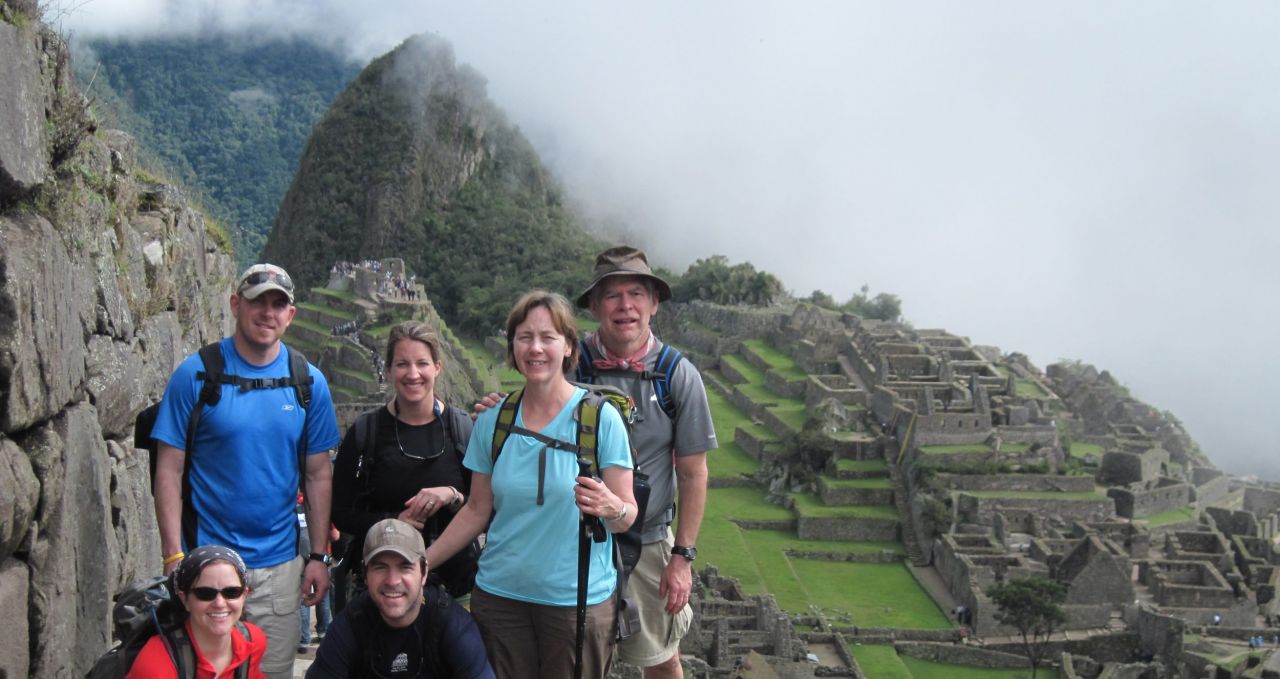
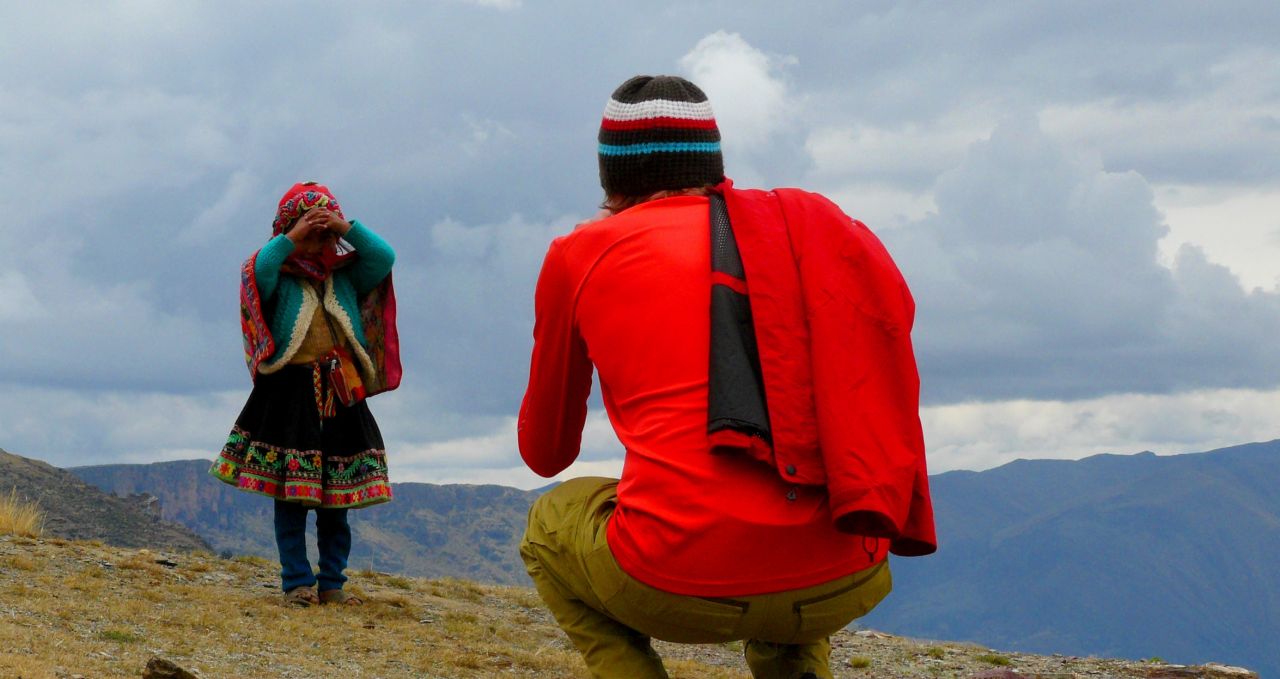
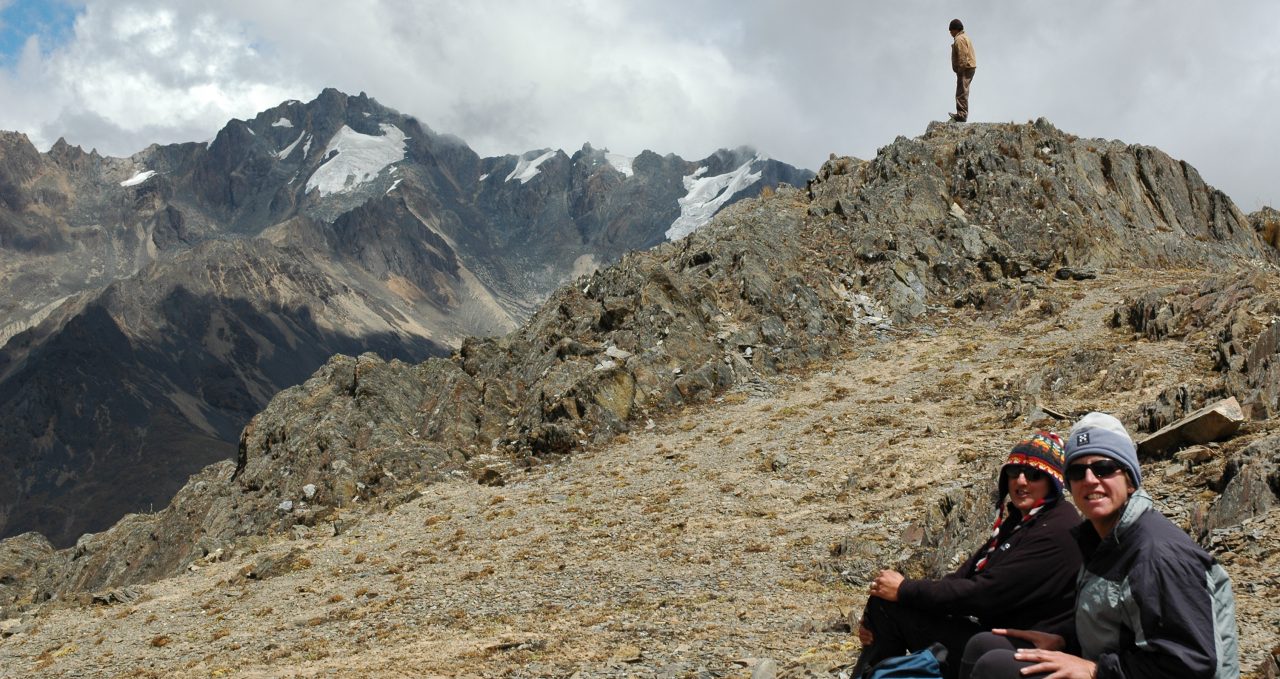
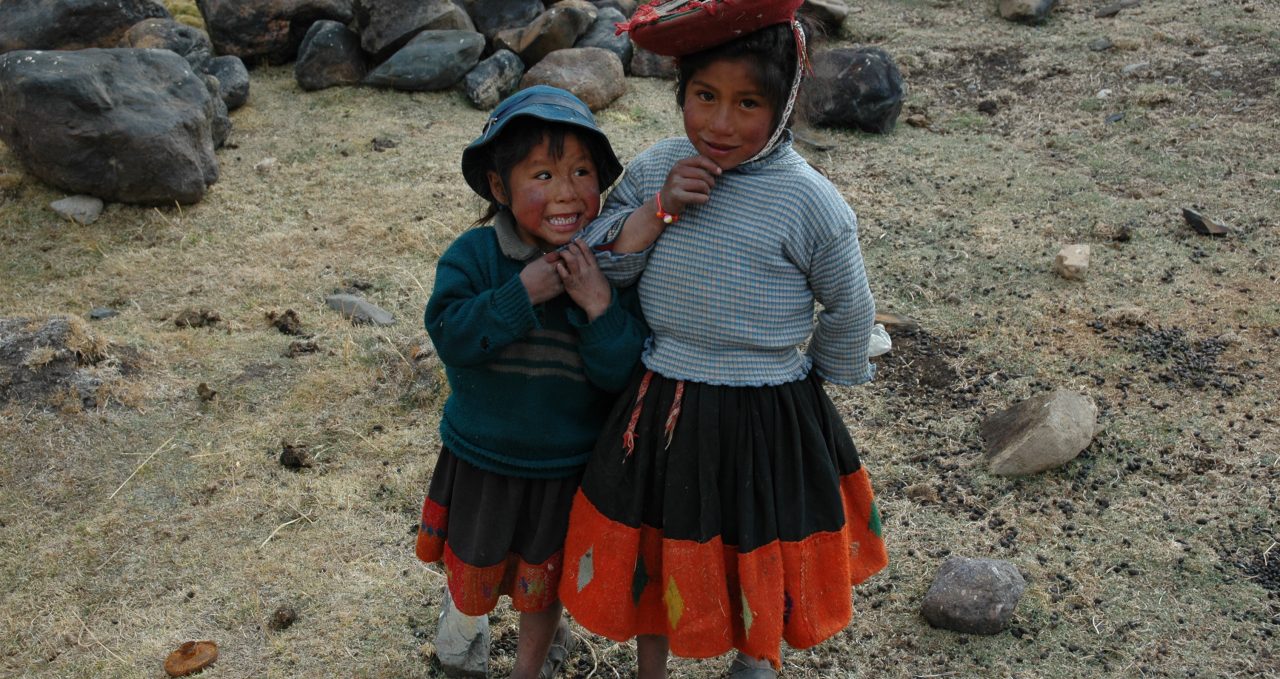
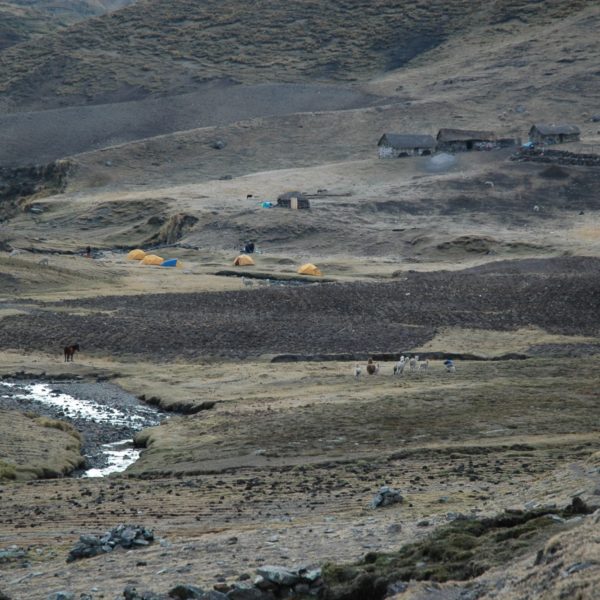
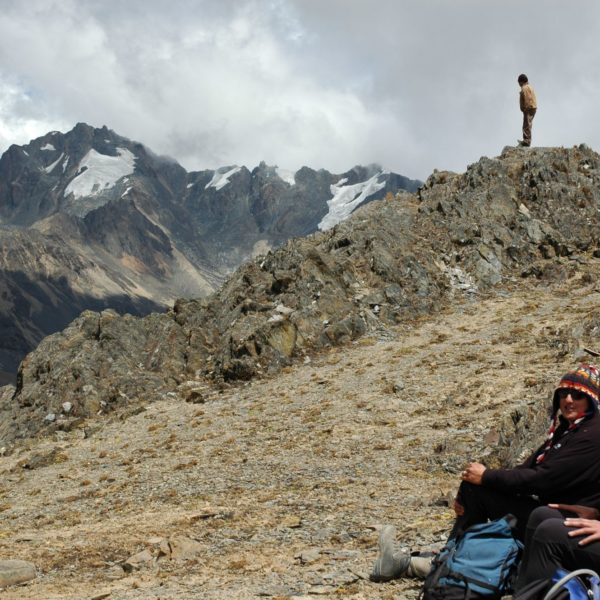
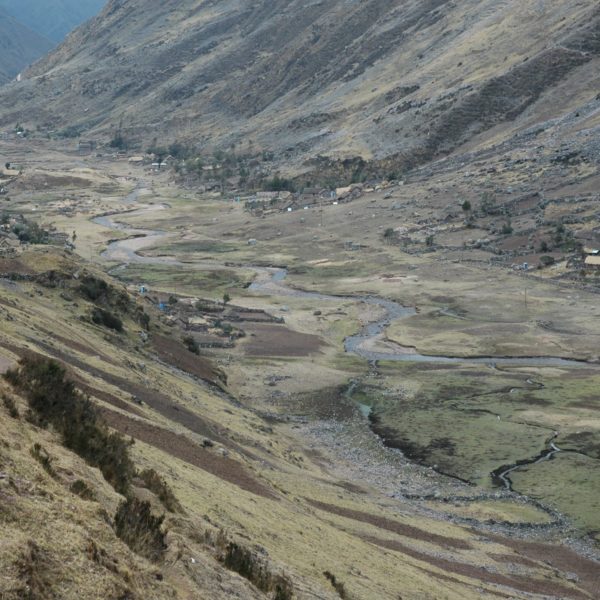
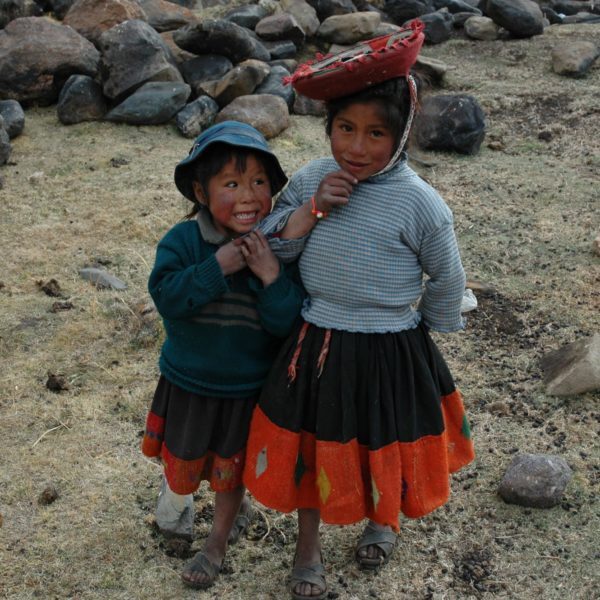
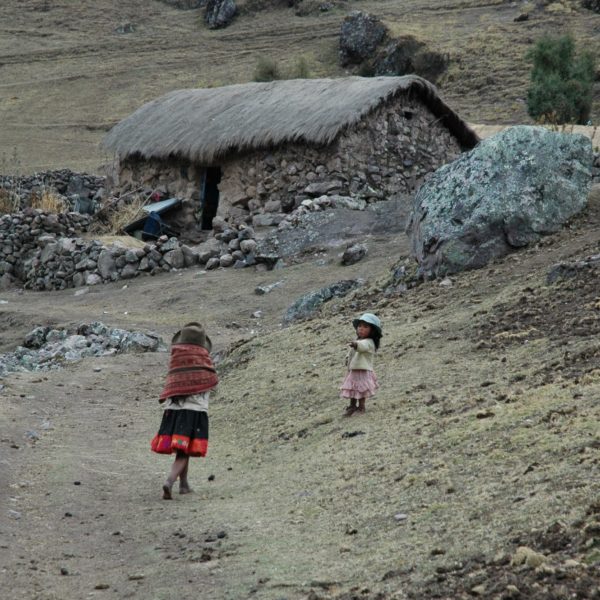
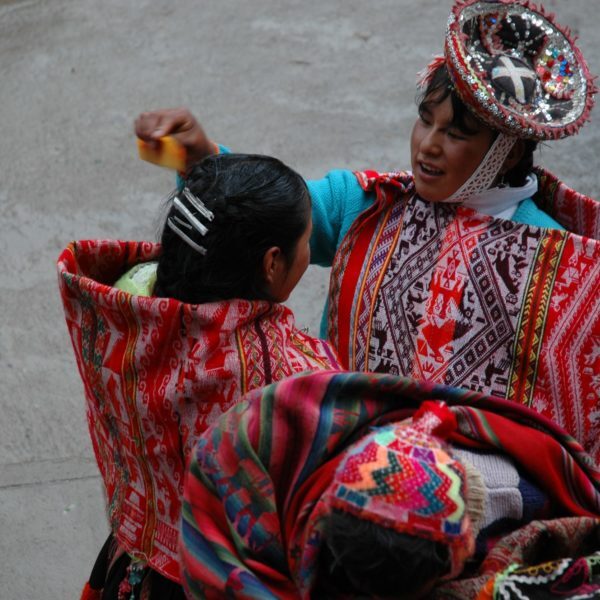
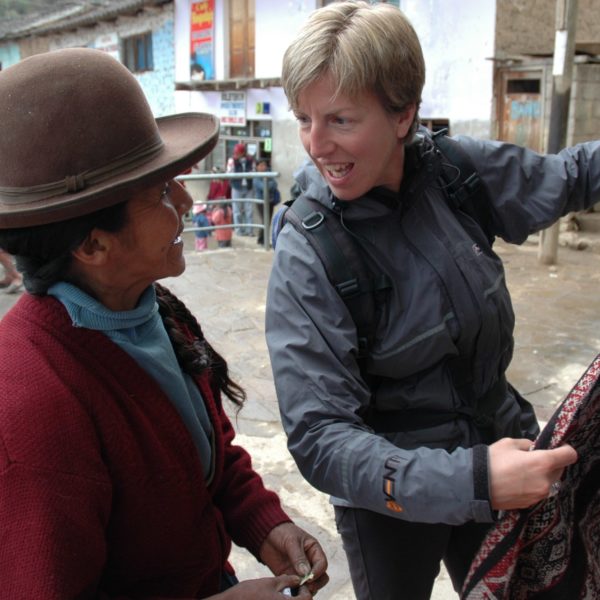
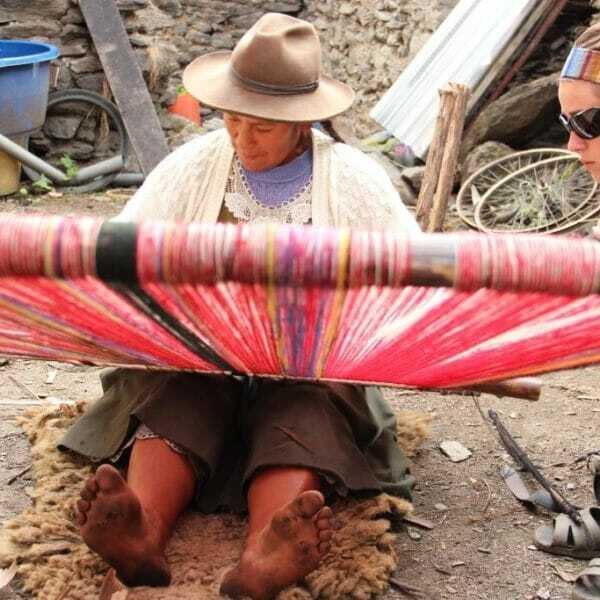
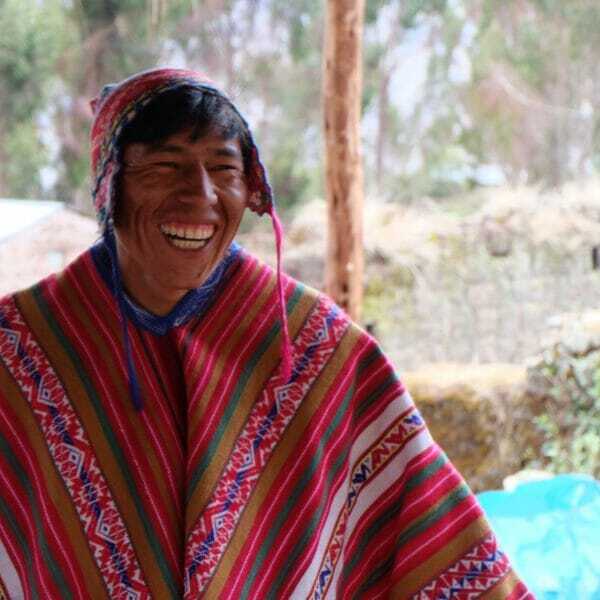
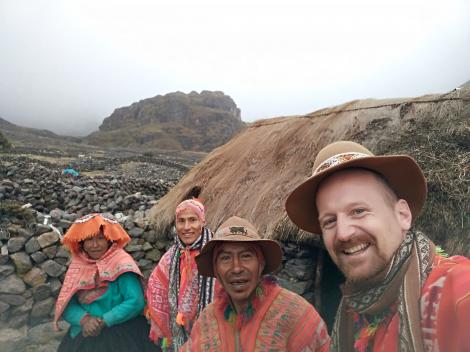
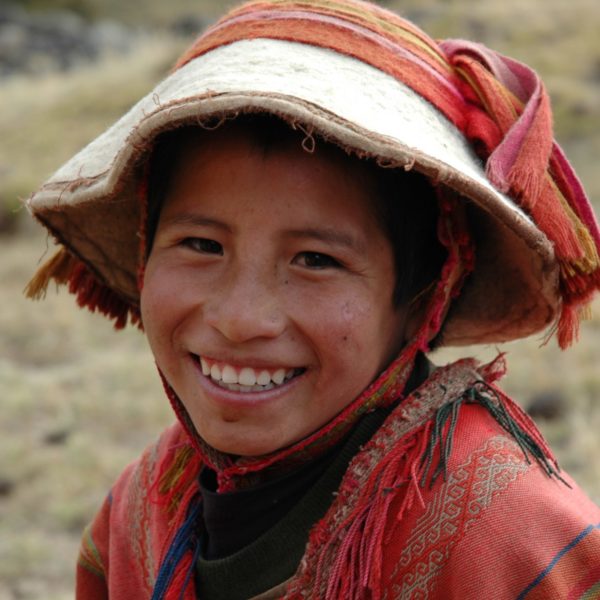
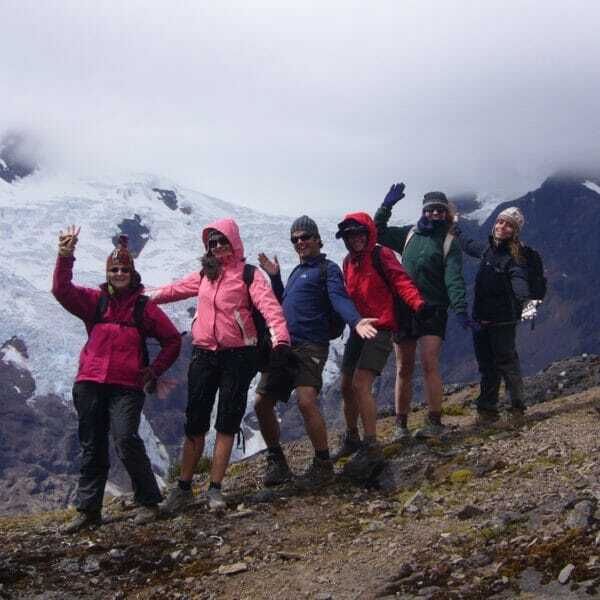
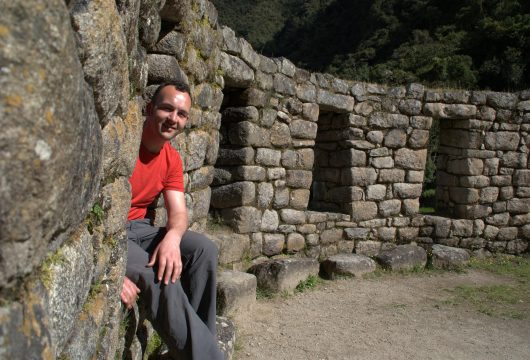
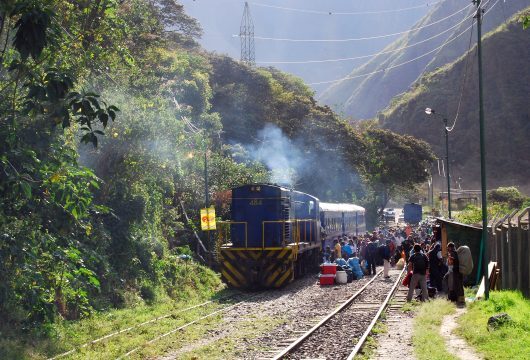
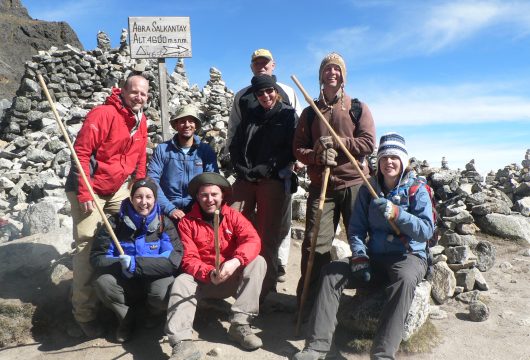
 a Group Tour
a Group Tour  a Tailor Made Tour
a Tailor Made Tour 